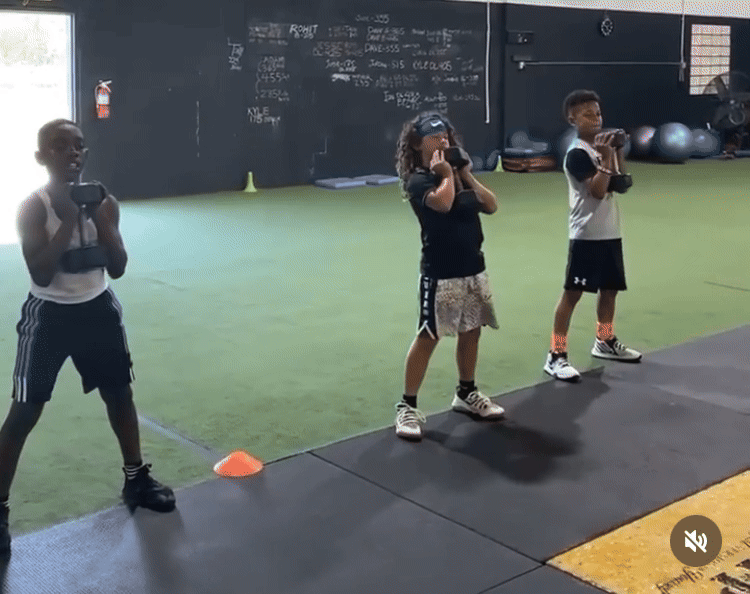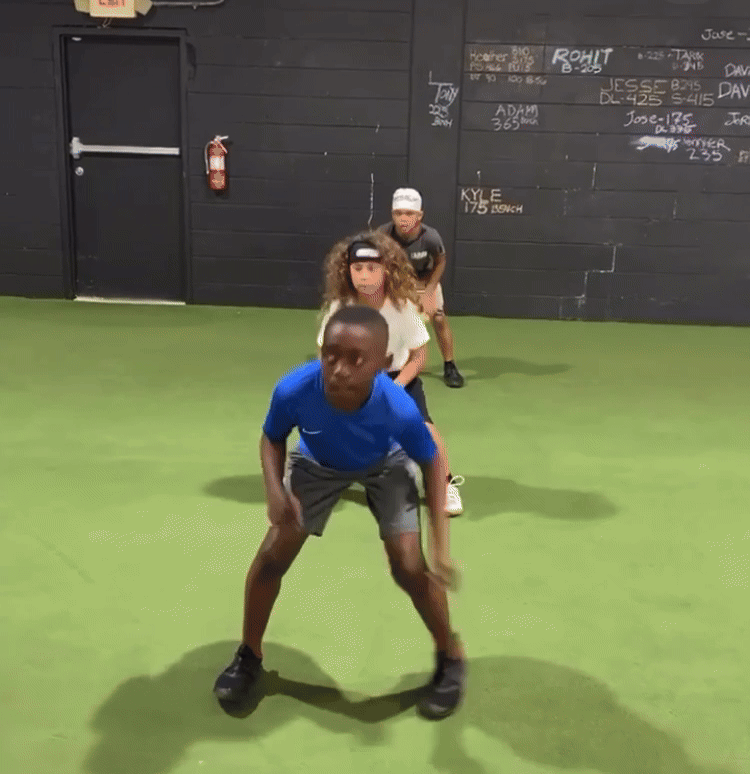Parents and coaches ask all the time, “What’s the best way to train young athletes?”
If your athlete is between 6 and 16, the answer depends entirely on their stage of development. At Overtime Athletes, we follow the late specialization model, meaning kids should build broad athletic skills first, then specialize later.
Here’s the full breakdown.
The Late Specialization Model
You’ve probably heard that over 95% of NFL draft picks were multi-sport athletes in high school.
That’s no accident.
Early specialization, focusing on one sport too young can limit physical literacy, cause overuse injuries, and lead to burnout.
Late specialization, on the other hand, builds better overall athletes: faster, stronger, more coordinated, and more resilient when they finally lock in on one sport later in their career.
Ages 6-9: The FUNdamentals
At this age, the focus is on movement skills, not workouts.
Kids should master the “ABCs” of athleticism:
- Agility
- Balance
- Coordination
The goal is exposure! New movements and games that challenge body awareness.
Key movement patterns to build:
- Push / Pull
- Squat / Hinge
- Gait (run, skip, jump)
- Twist / Rotate

Use single leg drills, lateral movement, and fun coordination games.
One structured training day per week is enough and the rest should be active play: pickup basketball, backyard soccer, tag, climbing, biking.
The mission: Develop movement confidence, not muscle.
Ages 9-12: Learn to Train
Now we teach technique and control.
This is where athletes build the foundation for future strength and speed work.
Movements like:
- Goblet squats for proper knee and hip mechanics
- Pushups and pull ups for upper body control
- Medball throws, jumps, and sprints that are all performed at high velocity
Why?
Because at this age:
If you train fast, you get fast.
If you train slow, you get slow.
Skip the long, slow conditioning runs. Focus on short, explosive efforts that teach the nervous system to move efficiently.
Ages 12-16: Train to Train
This is where youth athletes begin structured athletic development.
The emphasis is still on general athleticism, not sport specific specialization.
Program focus:
- Press, Pull, Squat, Hinge
- Linear & lateral speed
- Vertical and horizontal jumps
- Strength across full ranges of motion
Even if your athlete plays one sport like a baseball pitcher it is important to keep them training like a complete athlete.
Balance, power, and strength all transfer to the mound, court, or field.
Once they hit 16-18, then it’s time to specialize and refine based on position or sport.

Why This Model Works
This framework is based on research from Dr. Istvan Balyi, the creator of the Long Term Athlete Development (LTAD) model which ensures athletes:
- Develop movement literacy before loading weight
- Build strength safely through proper mechanics
- Avoid burnout and repetitive overuse injuries
- Enter college or elite training fully prepared to specialize
Bottom Line
The best youth training method isn’t about early dominance, it’s about long term development.
- Ages 6-9: Movement & fun
- Ages 9-12: Technique & speed
- Ages 12-16: Strength & structure
Build a foundation first, and specialization will take care of itself.
If you want a full, age based program that follows this system, check out the Youth Performance Blueprint at Overtime Athletes.

